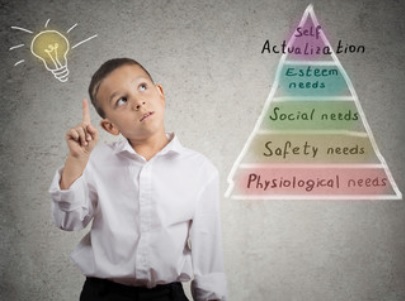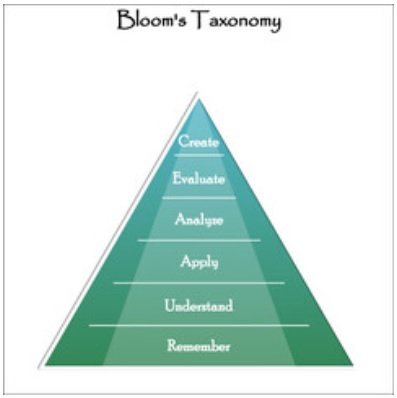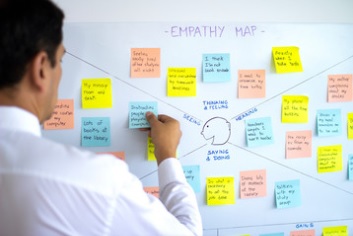INTRODUCTION
The names Maslow and Bloom are often the topic of debate and discussion in educational circles. Lately however, Bloom seems to lead the way as we scramble for data to back up the funding, infrastructure, and business demands of our schools. While not necessarily a negative thing, are we becoming increasingly focussed on academic success rather than the human needs of our students? Is it possible to achieve that success if our fundamental needs are overlooked? What does this mean for our EAL students?
According to Maslow (1943), the pyramid begins with the universal needs that all humans require in order to gain the higher level emotional needs.
He believed that in order for us to be motivated to reach the next stage, we must satisfy the preceding stage. However, newer research suggests that the stages are not strictly hierarchical and may continuously overlap each other (deckers, Lambert, 2018).
Maslow’s hierarchy begins with the base of physiological needs that we must have for mere survival such as food, shelter, clean water, sleep and so on. Next comes safety and security where our physical and mental well-being is protected by our environment and the people around us. We move on to feeling loved and a sense of belonging to our family, community and the world at large. When these three needs are somewhat stable, we begin to fulfill our need for self-esteem by becoming more confident and independent. We start to seek respect and recognition for our efforts. Finally, we reach the peak of the pyramid and grasp the need for self-actualisation. We have the strength and desire to become the best versions of ourselves.
Bloom’s Taxonomy focuses on how we as learners follow a hierarchy when learning new things. We begin by remembering facts and new ideas. We then move on to understanding these new knowledge. Only then can we begin to apply and then analyse our latest insights. We begin to go deeper and gain the ability to experiment and practice higher order thinking skills such as evaluating and creating original work using our newfound mastery.
They carry within their DNA trauma from wars, colonisation, displacement, loss of family and friends, uncertainty, fear, anxiety, and this list probably does not have an end. How would you feel if you instantaneously lost your basic needs, security, family, culture, language, and a sense of belonging? Imagine that you are forced to leave the only home you have ever known. You are then sent to a new country where you have no choice but to learn a new language, eat strange foods that sometimes make you sick, and learn new social norms and behaviours.
Looking at Maslow’s hierarchy, our EAL students may have experienced a lack of physiological needs, safety, and most importantly belonging. Is it then possible for them to even try to begin at remembering their new learning? The big question is, “CAN WE LEARN IF OUR BRAINS ARE CONSTANTLY IN THE FLIGHT/FIGHT/FREEZE MODE?”
So, how do we then help our EAL learners? We can begin by checking their enrolment information. Amongst many other things, we need to know:
to feel safe, and to trust that they are in a more stable environment with a teacher who understands and cares about their wellbeing.
It takes time to learn that there will be enough food in the canteen even if we wait in line. We do not need to shove and push like we did in the refugee camps so our family could eat for the night. It takes time to understand that the school bell, or siren does not mean that we are in danger and need to run and hide. Our teachers will allow us to ask questions without repercussions. We can run and play freely without fear of capture. It takes time and while the time moves forward, so will our students. As they relax and release some of their pain and fear, they will begin to feel safe and enjoy their new learning. And just then, when much of Maslow has been embraced, we can begin to use Bloom’s taxonomy and take them on their new journey of learning.
Since moving to Melbourne in 2016, she has held leadership roles as an EAL Learning Specialist and Curriculum Coordinator. She continues to present at local and international online workshops and webinars. She has recently completed co-writing and publishing a step-by step Cooperative Learning Strategies Guide for teachers. Boney is passionate about growing EAL knowledge through sharing best practices.
Reference
Deckers, Lambert (2018). Motivation: Biological, Psychological, and Environmental. Routledge Press.






